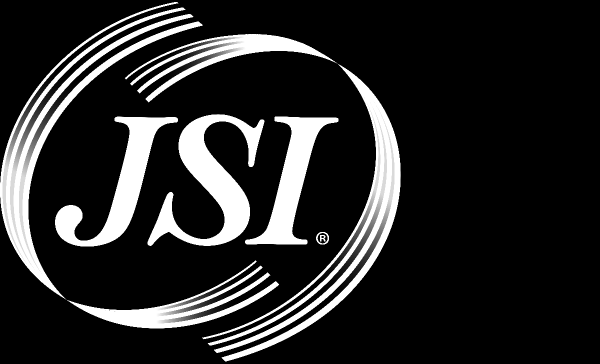
Draft Order on USF Reform Being Circulated

JSI to Provide Analysis When Text Is Released
Late Friday, Chairman Wheeler circulated a draft of the long-anticipated order reforming universal service for rate-of-return carriers (RLECs) to the other four FCC Commissioners. Because Commissioners Clyburn and O’Rielly have been heavily engaged in the process of drafting the order, the Chairman has the votes necessary to adopt the order without making substantial changes. Also, JSI has been informed that the order can be adopted without being voted on during an FCC open monthly meeting and that it will be voted on before the FCC’s March 31 meeting.
Below we summarize the major items of what we understand are currently contained in the draft order, some of which could change during the circulation period. We will keep clients appraised of developments before the vote and will provide a comprehensive analysis of the order once the text is released. JSI also will be delving into the details of the order during its 2016 Management Seminars, as well as providing individual company analyses of the reforms’ impact and assisting those clients interested in electing the Alternative Connect America Cost Model (A-CAM).
Two Path Approach
As has been anticipated, the order allows for RLECs to voluntarily elect the A-CAM. RLECs that do not choose that option will remain on a modified version of rate-of-return regulation, which is explained in more detail below. It is JSI’s understanding that the order envisions that some of these modifications could become effective as early as July 1, 2016.
Those interested in A-CAM should be aware that a final version of that model will be released after the order has been adopted, with a brief period of time allowed to make the election. The final version will be similar to Scenario 4.2 of the most recent version of the A-CAM and include specific build-out obligations for the locations being funded, Form 477 data from the June 2015 filing, and incorporating a 9.75% rate of return. Previous versions of the A-CAM were run at 8.5%.
The FCC has indicated that a certain amount of additional funding above the $2 billion budget for rate-of-return carriers will be made available for those RLECs electing the A-CAM. If the demand for funding exceeds this additional amount, another version of the A-CAM will be run and those making the initial election will have an opportunity to opt out. We’ve heard that the Wireline Bureau would like this election process to conclude quickly so that A-CAM support can be distributed to electing RLECs by October 2016. It is unclear at this time if a company’s A-CAM election must include all RLEC operations in a state or if the RLEC will continue to be classified as a rate-of-return carrier for special access purposes upon electing A-CAM support.
Modified Rate of Return
The draft order makes the following major changes to traditional rate-of-return regulation:
- Reduces the authorized rate of return from 11.25% to 9.75% over a six-year period, declining .25% per year.
- Applies a competitive overlap policy to Interstate Common Line Support (ICLS), but not to High Cost Loop Support.
- ICLS support will be subject to disaggregation in census blocks where an “unsubsidized competitor” demonstrates that it serves 85% or more of the locations within the census blocks with “qualifying” broadband and voice service.
- Qualifying broadband – 10/1 Mbps speed with latency suitable to deliver VoIP services and 100 gigabyte/month usage allowance at comparable rates.
- Qualifying voice – interconnected, compliant with 911/E911, CALEA, number portability and provide service at reasonably comparable rates.
- Competitor must provide information, such as street address, geocoded information or maps, to demonstrate coverage.
- This competitive review will take place no more than once every seven years.
- In an ex parte letter, NTCA proposed several options that would be available for disaggregating support and a phase-in approach to implement this rule. We understand that the FCC will seek comment on these proposals as part of the order.
- ICLS support will be subject to disaggregation in census blocks where an “unsubsidized competitor” demonstrates that it serves 85% or more of the locations within the census blocks with “qualifying” broadband and voice service.
- ICLS support will be modified to allow for stand-alone broadband.
- A $42 per-line, per-month benchmark will apply. This means that the FCC will assume that the RLEC will receive $42 per month from each stand-alone broadband customer and only costs above this benchmark will receive support.
- Build-out obligations that require a certain percentage of projected ICLS to be spent in areas that do not currently have broadband deployment of 10/1 (unserved areas).
- Those with 0-20% deployment must use 35% of ICLS in unserved areas.
- Those with 20-40% deployment must use 25% of ICLS in unserved areas.
- Those with 40-80% deployment must use 20% of ICLS in unserved areas.
- Those with 80% or more will have no additional build-out requirements, but will have annual reporting requirements.
- Limits will be imposed on capital and operating expenses.
- Capital expenses on loop plant may be limited by the Capital Budget Mechanism the rural associations previously filed in an ex parte letter.
- Operating expenses will be limited on “regression-based” formulas that may use a 1.5 standard deviation and there will be a transition of three years for companies affected by the limits.
Importance of Form 477 Data
Regardless of which path an RLEC takes, the FCC will be using Form 477 data to determine the amount of USF support. In the A-CAM, Form 477 data is used to determine competitive overlap or eliminate support in locations which have access to fiber or cable modem facilities. For those that remain under modified rate of return, Form 477 data will be used to determine whether certain census blocks must have support disaggregated.
Over the past few months, some clients have discovered inadvertent errors to the Form 477 data that they filed involving their wireline, cable modem and/or fixed wireless services that impacted their own or neighboring RLEC’s A-CAM support. These clients made revisions and filed letters urging the FCC to include the revisions in calculating A-CAM support.
In recent conversations with FCC commissioner staff, we were informed that if RLECs need to make any revisions to Form 477 data that could impact future support, they should make the revisions before the release of the order and file letters notifying the FCC. Accordingly, JSI strongly encourages clients to make sure that their Form 477 broadband deployment data is accurate and if any revisions need to be made, file a letter as soon as possible notifying the FCC that revisions have been made.
Companies will be tasked with making critical long-term settlement elections once the order is released and becomes effective. JSI is poised to assist you with the options available to your company.
If you would like assistance in revising your Form 477 data and filing letters with the FCC, or have any questions about the draft order, please contact Brian Sullivan, John Kuykendall or Steve Meltzer in JSI’s Maryland office at 301-459-7590.
Source: JSI e-Lert




